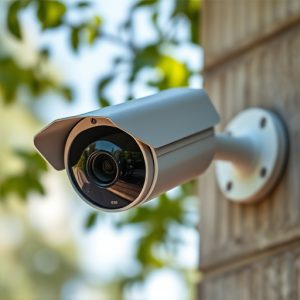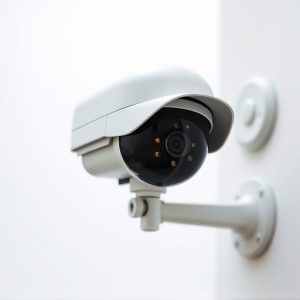Do Dummy Security Cameras Deter Crime? Unveiling Their Impact
Dummy security cameras, though visually resembling real surveillance equipment, are cost-effective d…….
Dummy security cameras, though visually resembling real surveillance equipment, are cost-effective deterrents for crime prevention. Strategically placed in high-risk areas, they signal potential criminals of active monitoring. However, their effectiveness is debated; while some research supports their ability to reduce criminal activity, others argue that skilled offenders can quickly discern the difference between real and fake cameras. Although dummy cameras offer easy installation, they lack advanced features provided by authentic security systems, making them a mixed solution for crime deterrence.
“Uncover the power of imitation security cameras as a crime prevention tool with our comprehensive guide. Explore ‘Understanding Dummy Security Cameras’ to grasp their inner workings and strategic placement for maximum impact. Delve into ‘The Impact on Crime Prevention’ to uncover whether visual deterrence lives up to its name. Finally, weigh the pros and cons in ‘Pros and Cons’ to determine if these fake cameras are an effective alternative or complement to real security measures when it comes to deterring crime.”
- Understanding Dummy Security Cameras: How They Work and Their Placement Strategies
- The Impact on Crime Prevention: Does Visual Deterrence Really Exist?
- Pros and Cons: Weighing the Effectiveness of Imitation Security Cameras Against Real Ones
Understanding Dummy Security Cameras: How They Work and Their Placement Strategies
Dummy security cameras, also known as imitation or fake cameras, are a popular choice for homeowners and businesses looking to enhance their security while keeping costs low. These devices mimic the appearance of real security cameras, often with intricate designs that make them nearly indistinguishable from the real thing. But how do they work? At its core, a dummy camera typically consists of a housing that resembles a standard security camera lens, combined with LED lights and sometimes even a mock lens cover to create a realistic effect. These components are connected to a power source and can be hardwired or wireless, allowing for easy installation.
When placed strategically, dummy cameras can serve as an effective deterrent against potential criminals. They are often positioned in high-risk areas like entry points, parking lots, and visible exterior spaces. The mere presence of these fake cameras can make intruders hesitate, knowing that any attempt at illegal activity is likely to be captured on camera. While they don’t actively record footage or transmit signals like real security cameras, their realistic appearance sends a clear message: “This area is under surveillance.” Understanding the psychology behind deterrence and choosing the right placement for dummy cameras can significantly contribute to overall security measures without breaking the bank.
The Impact on Crime Prevention: Does Visual Deterrence Really Exist?
The presence of security cameras is often believed to act as a powerful deterrent against criminal activity, deterring potential offenders due to the fear of being observed. However, when it comes to dummy or imitation security cameras, the question arises: do they truly impact crime prevention? The concept of visual deterrence suggests that the visible surveillance can discourage illegal behavior, but research has yielded mixed results.
While some studies indicate a positive correlation between security camera installations and reduced crime rates, others challenge the effectiveness of visual deterrence. Do dummy security cameras deter crime? It’s complex. Criminals may quickly realize the difference between real and fake cameras, potentially rendering the deterrence factor moot. Nevertheless, even if they are aware of the simulation, the mere presence of imitation cameras could still create a psychological effect, making offenders hesitate before committing crimes.
Pros and Cons: Weighing the Effectiveness of Imitation Security Cameras Against Real Ones
While dummy security cameras may appear similar to real ones, their effectiveness in deterring crime is a topic of debate. One of the primary advantages is their cost-effectiveness and ease of installation. These imitation cameras can be a viable option for businesses or homeowners on a tight budget who still want to enhance security. They serve as a visual deterrent, making potential intruders think twice before attempting any illegal activities, thus reducing the likelihood of crime.
However, there are cons to consider. Real security cameras offer a higher level of protection with advanced features like motion detection and high-resolution footage. Dummy cameras may not trigger alarms or provide real-time surveillance, which could be a significant drawback in situations requiring immediate response. Moreover, skilled criminals might recognize these fakes and proceed without hesitation, rendering them less effective as a security measure. Effective crime deterrence relies on both visual cues and the promise of immediate consequences, something that only authentic security systems can fully deliver.
While the effectiveness of dummy security cameras in deterring crime remains a topic of debate, with both proponents and critics presenting valid points, the simple act of installing these imitation devices can significantly impact an area’s perceived security. Although they may not provide the same level of protection as real cameras, strategically placed dummy cameras can serve as a powerful psychological deterrent, encouraging potential criminals to think twice before acting. Ultimately, whether dummy security cameras do indeed deter crime depends on various factors, including placement, local crime trends, and the overall environment.


